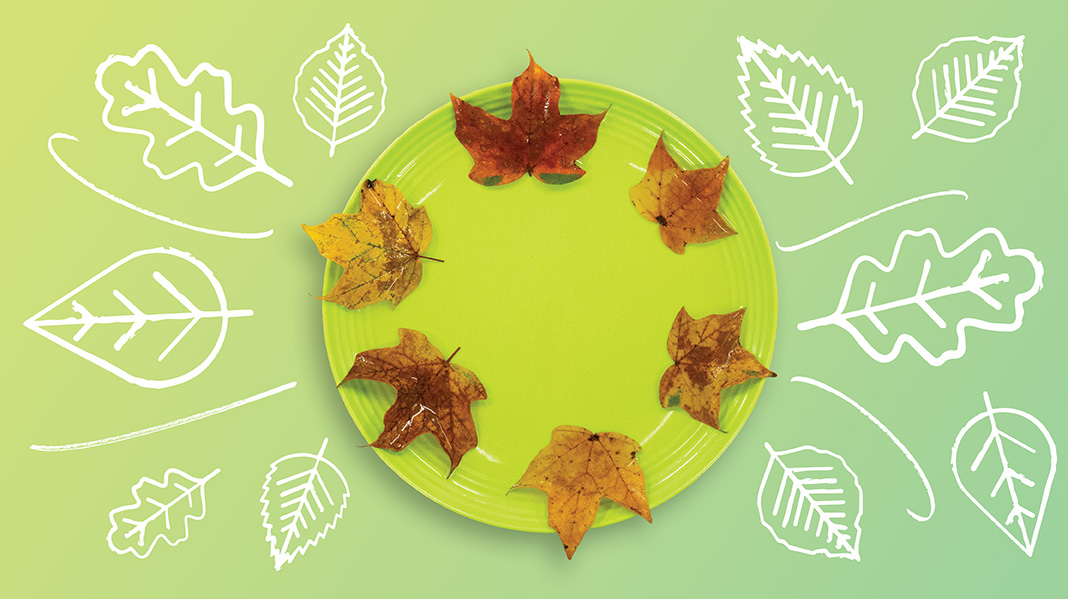
I will never forget my most stunning experience with fall color. I was in high school, taking a driver’s education course, and it was time to practice our freeway driving. My driving buddy and I didn’t know where we wanted to go. So, the instructor suggested we drive to the Blue Ridge Mountains in western North Carolina. When I was driving, I barely looked at anything but the road. It was only my second time behind the wheel! But, when my driving buddy took over, I was able to look out at all the beauty of God’s creation around me. And what a sight it was! I didn’t take a camera with me, so all I have are memories. Wouldn’t it be exciting to keep that fall color around? Preserving leaves with glycerin is easy!
Preserving Fall Leaves
If the beauty of fall has a special place in your heart, you might want to try preserving fall leaves with glycerin. Glycerin is a natural preservative that you can find in the health and beauty section of your local store. You’ll find the rest of what you need around your house and neighborhood. Take your kids on a neighborhood walk to pick some fresh leaves from the trees. If you can find a variety of colors, this activity will be the most interesting.
Pour your small bottle of glycerin into a pie or cake pan. Then fill the container with water twice, adding that to your pan as well. Mix well. Snip the end of the stem off your leaves and pile them into the glycerin mixture. Then add a second pan or a Styrofoam plate with something heavy on top to keep the stems of the leaves submerged. The last ingredient you need is patience. The process takes several days. Small leaves may be done in a couple days. Larger ones could take a week. When they are done, the leaves will be shiny and flexible. They will maintain their leafy feel, and the color that remains will last for years.
How Leaves Change Color
Fall leaves change color when the trees cannot produce enough chlorophyll as the days shorten. Chlorophyll is a green substance stored in chloroplasts that allows plants to make energy from sunlight. The yellow and orange colors are also in the chloroplasts of the leaves, but they are hidden by the abundance of green. Some leaves will make a red pigment in fall that helps the leaves stay on the trees longer. This allows the trees to draw most of the nutrients back into the branch before the leaves drop. Harsher, colder fall weather tends to result in more red color.
How Glycerin Preservation Works
So, how does preserving leaves with glycerin? Glycerin follows the water transport pathways that already exist in the leaves. Plants have a tissue called xylem which is specialized for water transport. Cut flowers can soak up water from a vase and remain fresh looking for several days. In the same way, the leaves are soaking up the glycerin which will prevent them from drying out. They are also losing the water they had as the glycerin replaces it. Because the red pigment is not stored in the chloroplast, it will leak out somewhat during glycerin preservation.
Taking It Further
Several variations of this experiment will maximize the learning that takes place.
- Compare leaves taken freshly from the trees to leaves collected off the ground. Which ones work better and last longer? The fresh ones will work better, because they were more recently involved in active transport of water. The ones from the ground may have already started to dry out.
- Try leaves of different sizes and compare how long it takes for them to incorporate the glycerin. Since the glycerin can only enter the leaves through the cut stem, it will take time for it to travel to the tips. The farther it has to go, the longer it will take. You may want to check all of the leaves after a couple days. You should notice a difference in the large leaves near the stem versus the tips.
- Include leaves of multiple colors, and find out which ones maintain their color the best. Some of the leaves will not be as vivid after the glycerin bath. Yellow and orange leaves tend to maintain color the best, because those pigments are stored in the chloroplast. The red chemical is water-soluble and turns the water a reddish-brown color as some of it leaks out.
- Put some leaves in water instead of glycerin, and watch what happens to them over time. The leaves in the water bath will eventually dry out and turn brittle. The glycerin leaves will last for years and bring the joy of fall color to your home throughout the year.

• • • • •
Valerie is a wife and a mother to a very busy toddler. In her free time she enjoys reading all kinds of books. She earned a B.S. in Biology from Bob Jones University, minoring in Mathematics, and a Ph.D. in Molecular Genetics from Ohio State University. Valerie has 15 years of experience working in research laboratories and has coauthored 8 original research articles. She has also taught several classes and laboratories at the high school and college levels. She currently works as a Data Analyst and a freelance writer.
Leave a Reply